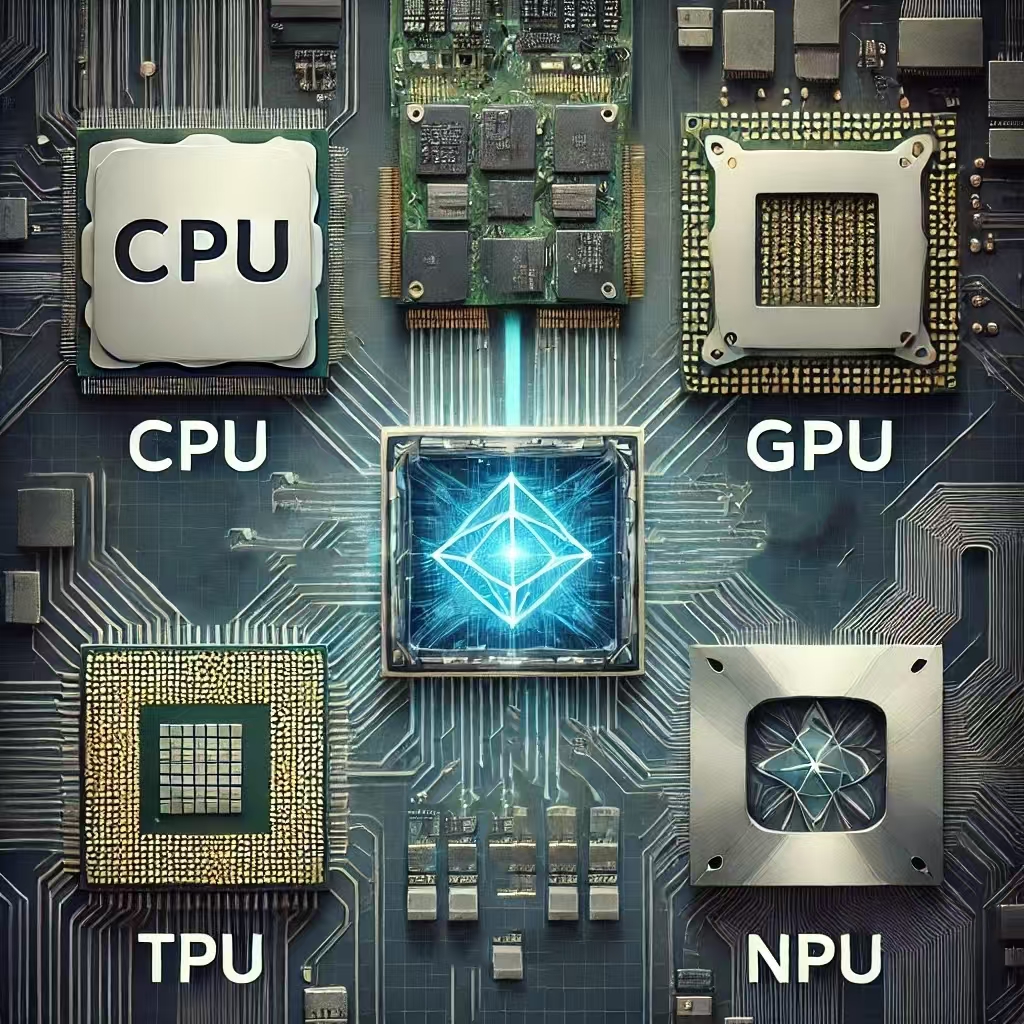
Image source: AI-generated
In modern computing, the CPU (Central Processing Unit), GPU (Graphics Processing Unit), TPU (Tensor Processing Unit), and NPU (Neural Processing Unit) each play crucial roles. Understanding the differences and applications of these processing units can help you make the best choice for your specific needs.
Overview of Different Processing Units
1. CPU (Central Processing Unit)
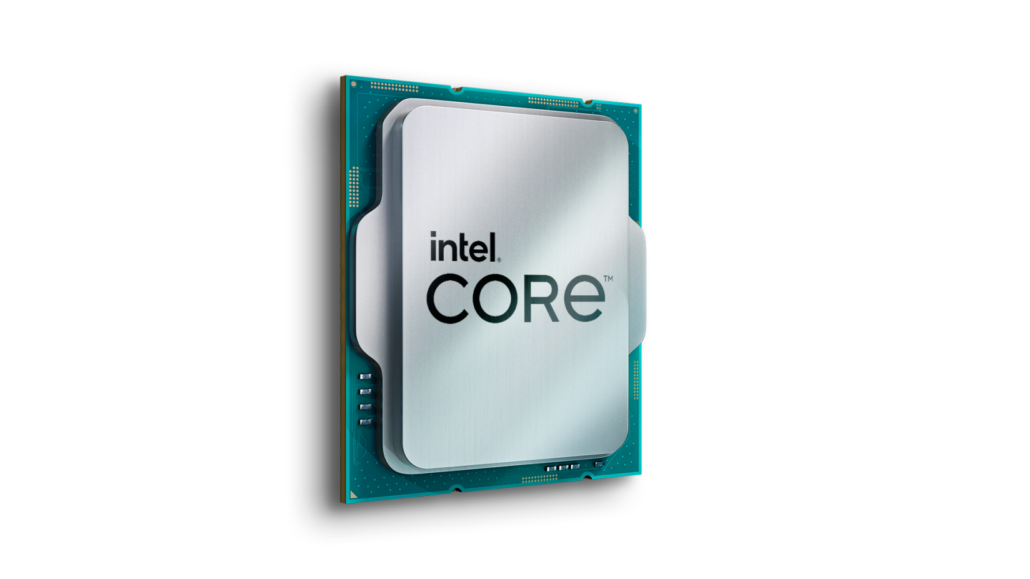
Image source: intel
Features and Uses
- Versatility: The CPU is the heart of a computer, capable of handling various tasks, from simple text editing to complex mathematical calculations.
- Serial Processing: CPUs excel at serial tasks, efficiently executing one instruction after another with each core.
- Multi-Core Support: Modern CPUs typically feature multiple cores, enabling them to handle multiple tasks simultaneously, thereby improving overall performance.
Suitable Scenarios
- Everyday computing tasks (e.g., document processing, web browsing)
- Software development and compilation
- Lightweight graphics processing and gaming
2. GPU (Graphics Processing Unit)

Image source: NVIDIA
Features and Uses
- Parallel Processing: GPUs have a large number of smaller cores that can handle thousands of parallel tasks, making them ideal for graphics rendering and matrix computations.
- High Bandwidth: GPUs possess high memory bandwidth, allowing rapid data transfer and boosting computational efficiency.
- Graphics Rendering: Originally designed for graphics rendering, GPUs are now widely used in scientific computing and machine learning.
Suitable Scenarios
- Graphics-intensive applications (e.g., 3D rendering, video editing)
- Deep learning and neural network training
- Data analysis and scientific computations
3. TPU (Tensor Processing Unit)
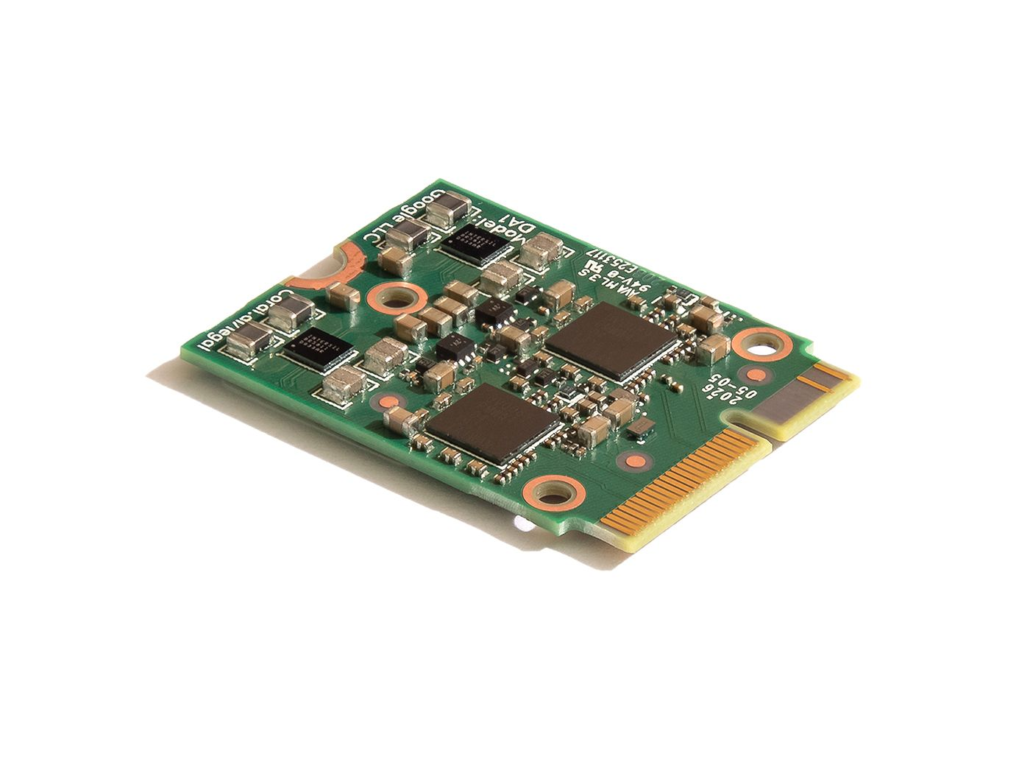
Image source: Seeedstudio
Features and Uses
- Specialized Efficiency: TPUs are hardware specifically designed by Google to accelerate machine learning tasks, particularly tensor operations.
- High Efficiency: TPUs offer higher efficiency and lower power consumption compared to CPUs and GPUs when handling specific machine learning tasks.
- Integrated Ecosystem: Seamlessly integrated with machine learning frameworks like TensorFlow, TPUs optimize the training and inference speed of deep learning models.
Suitable Scenarios
- Deep learning model training and inference
- Efficient AI application deployment
- Cloud-based AI computing (e.g., Google Cloud TPU)
4. NPU (Neural Processing Unit)
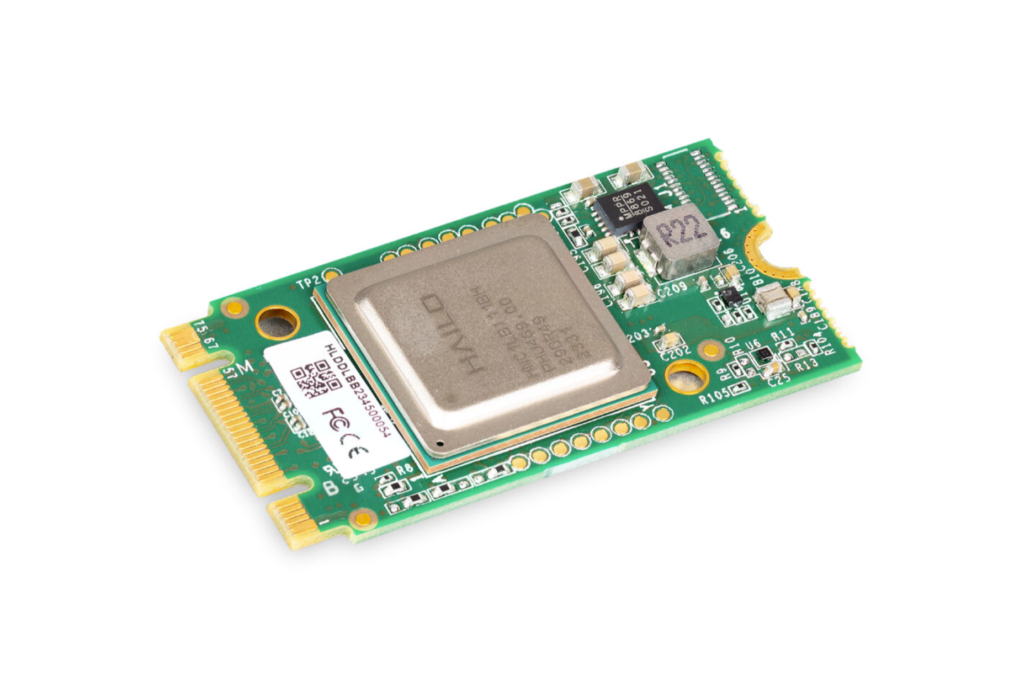
Image source: Seeedstudio
Features and Uses
- Dedicated AI Acceleration: NPUs are designed specifically for neural network processing, optimizing the execution of deep learning models.
- Low Power Consumption: NPUs have lower power consumption compared to CPUs and GPUs when executing AI tasks, making them ideal for edge computing and mobile devices.
- Fast Inference: NPUs can quickly execute neural network inference tasks, enhancing the intelligence capabilities of devices.
Suitable Scenarios
- AI applications on mobile devices (e.g., image recognition, voice processing)
- Edge computing devices (e.g., smart cameras, IoT devices)
- Efficient AI inference tasks
Differences Between TPU and NPU
| Aspect | TPU | NPU |
| Primary Use | Accelerates machine learning tasks, especially tensor operations | Specializes in neural network processing, optimizing deep learning models |
| Efficiency | Lower latency and power consumption in machine learning tasks, higher efficiency | Higher peak performance for handling complex and diverse neural networks |
| Integration | Integrated into low-power AI tasks, particularly in cloud and large-scale model training | Integrated into mobile processors and edge devices, providing efficient AI processing |
| Use Cases | Training and inference of deep learning models, cloud AI computation | Mobile AI applications (e.g., image recognition, voice processing), edge AI inference |
Who are the Manufacturers of CPUs, GPUs, TPUs, and NPUs?
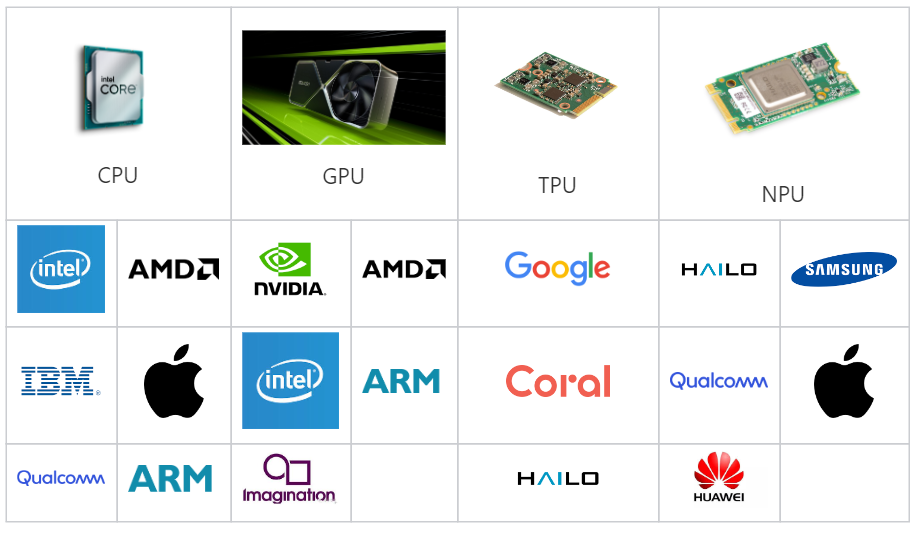
CPU Manufacturers: Intel, AMD, IBM, Apple, Qualcomm, ARM, etc.
GPU Manufacturers: NVIDIA, AMD, Intel, ARM, Imagination Technologies, etc.
TPU Manufacturer: Google, Coral (owned by Google), HAILO, etc.
NPU Manufacturer:HAILO, Samsung, Qualcomm, Apple, Huawei, etc.
How to Choose the Right Processor for Your Needs?
Choosing the appropriate processing unit—whether CPU, GPU, TPU, or NPU—depends on the specific requirements of your tasks and applications. Here’s a detailed guide to help you make an informed decision based on your needs:
Everyday Computing and Multitasking
- Recommendation: CPU
- Why: Versatility and efficiency in general-purpose computing.
- Use Cases: Web browsing, office applications, media playback, light gaming
Graphics Processing and Deep Learning Training
- Recommendation: GPU
- Why: Excels at parallel processing.
- Use Cases: 3D rendering, video editing, deep learning training, high-end gaming
Focused Machine Learning Tasks
- Recommendation: TPU
- Why: Designed for machine learning workloads.
- Use Cases: Training large-scale models, real-time inference, TensorFlow applications
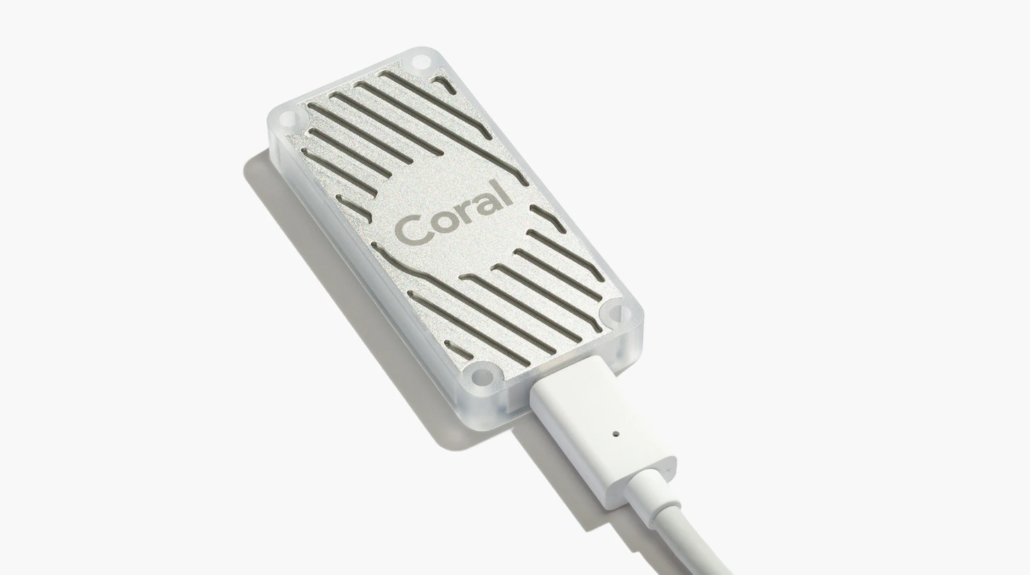
Mobile and Edge AI Applications
- Recommendation: NPU
- Why: Low power consumption and efficient AI processing.
- Use Cases: Image recognition, voice processing, edge computing devices
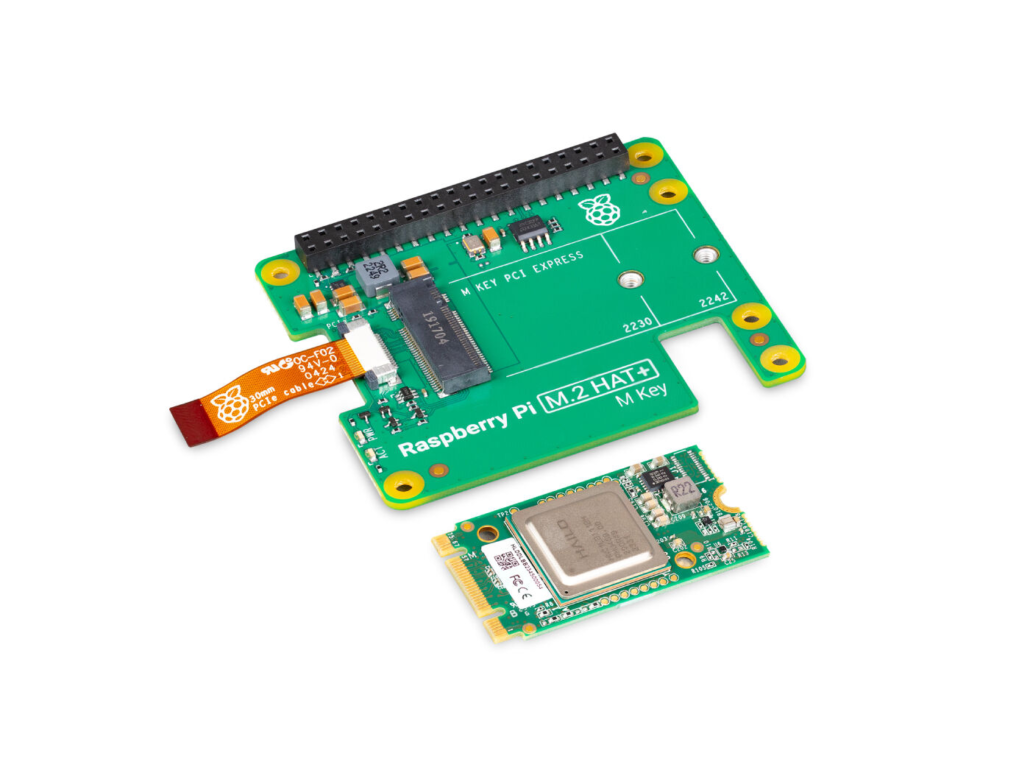
For edge AI applications requiring NPU capabilities, the Raspberry Pi AI Kit is a comprehensive and accessible option. Raspberry Pi itself does not come with a built-in NPU, and the Raspberry Pi AI kit includes the Hailo AI accelerator module, bringing advanced AI processing to Raspberry Pi projects with ease. It can now be purchased from official Raspberry Pi resellers for just $70, bringing advanced AI technology within reach for all.
Learn more: Raspberry Pi AI Kit(Hailo-8L) vs Google Coral USB Accelerator
Combining Different Units
In many cases, combining different types of processing units can provide the best performance for complex applications. For example:
- CPU + GPU: Use the CPU for general-purpose tasks and the GPU for parallel processing tasks like deep learning training and video rendering.
- CPU + TPU/NPU: Use the CPU for general operations and the TPU or NPU for specialized machine learning tasks, optimizing both efficiency and performance.
Choosing the right processing unit is crucial for optimizing the performance and efficiency of your applications. By understanding the specific strengths and applications of CPUs, GPUs, TPUs, and NPUs, you can make an informed decision that best suits your needs.
Whether you’re engaged in everyday computing, deep learning, or edge AI applications, the right hardware can significantly enhance your productivity and results.
For a deeper dive into how these processing units compare and to visualize their use cases, check out this video